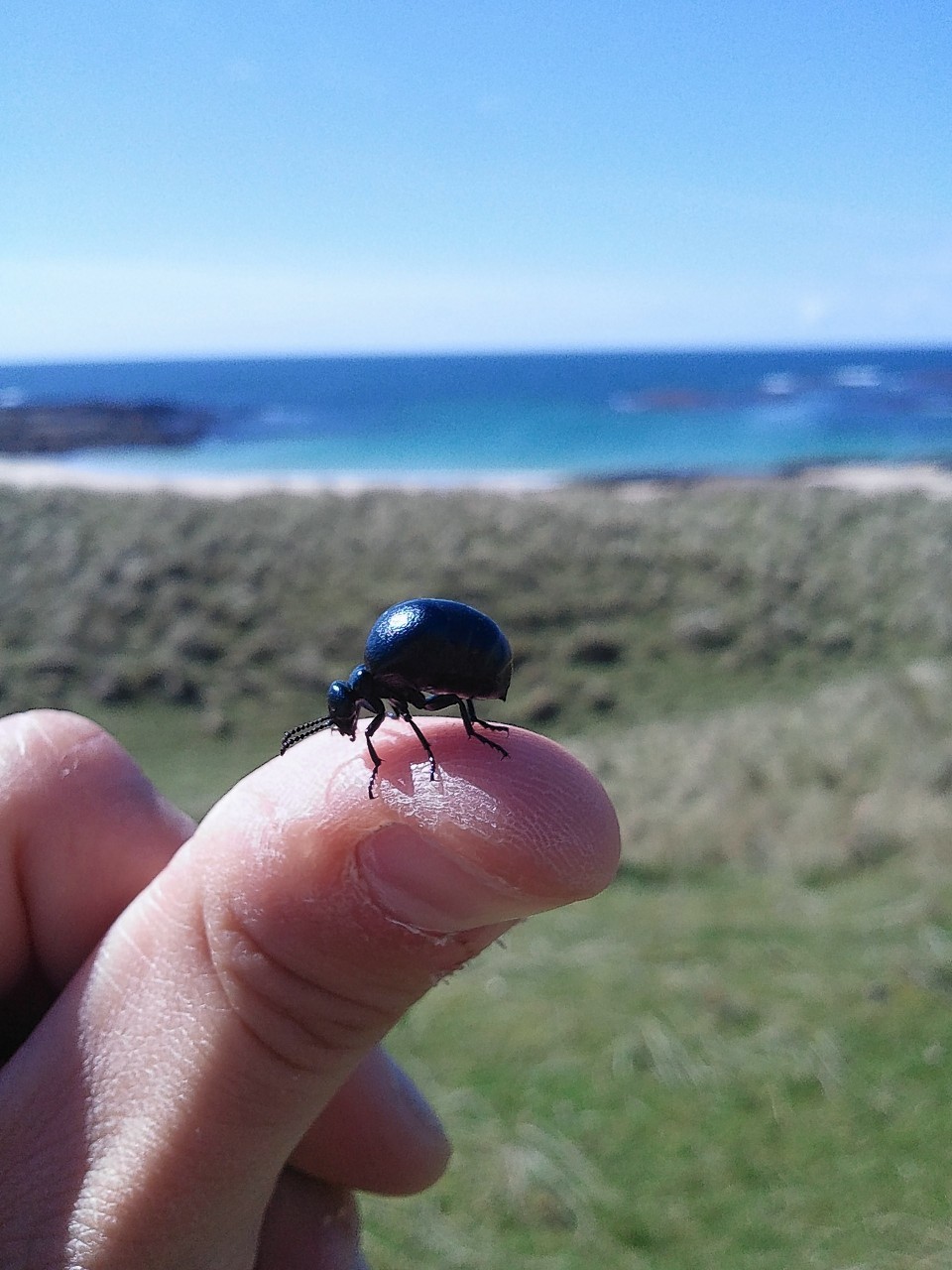A rare flightless beetle that has a bizarre interaction with bees, has been discovered in abundance on an Inner Hebridean island.
RSPB Scotland and Buglife researchers visiting Coll were surprised to discover more than 150 short-necked oil beetles on survey sites, a 400% increase on the last count carried out in 2010. Teams also identified two new sites for the beetle on the island.
Until 2008, short-necked oil beetles were thought to be extinct in the UK. However, recent surveys determined there are two small populations present – one in Devon and the other on Coll.
The beetle, which is named for the toxic oil secretions it produces when threatened, emerges in the early spring and immediately begin feeding on a wide variety of vegetation such as buttercups and other low growing plants.
The beetles mate and the females dig burrows and lay more than 1,000 tiny orange eggs.
Once the eggs have hatched, the young larvae crawl up on to vegetation, and wait to hitch a lift on a passing solitary bee in order to reach the bee’s nest. The oil beetle larvae then eat the bee’s egg as well as the protein-rich pollen the bee provides to its own larvae, emerging as a fully formed beetle the following spring.
It is thought changes in farming practices across the UK have led to short-necked oil beetle declines.
James Silvey, Nature Recovery Officer at RSPB Scotland, said: “It is fantastic to discover so many individual beetles on Coll and a good sign that the population is healthy and continuing to grow. The wildflower-rich habitat and the extensive dune systems found on this island make a fantastic home for bees and beetles alike. We will continue to monitor this population but it seems clear from this survey that Coll is the best place in the UK for this incredible species.”
Dr Scott Shanks, conservation officer at Buglife Scotland, said: “It was really exciting to find so many of these charismatic and rare beetles on Coll during the surveys. The abundance of wildflowers in the machair and dunes of the island, combined with lots of warm, bare sand provide near-perfect habitat for the solitary bees that the oil beetles depend on. It is hoped that the Information collected during the surveys will help protect these rare beetles and help identify other sites where the beetles may be found.”
